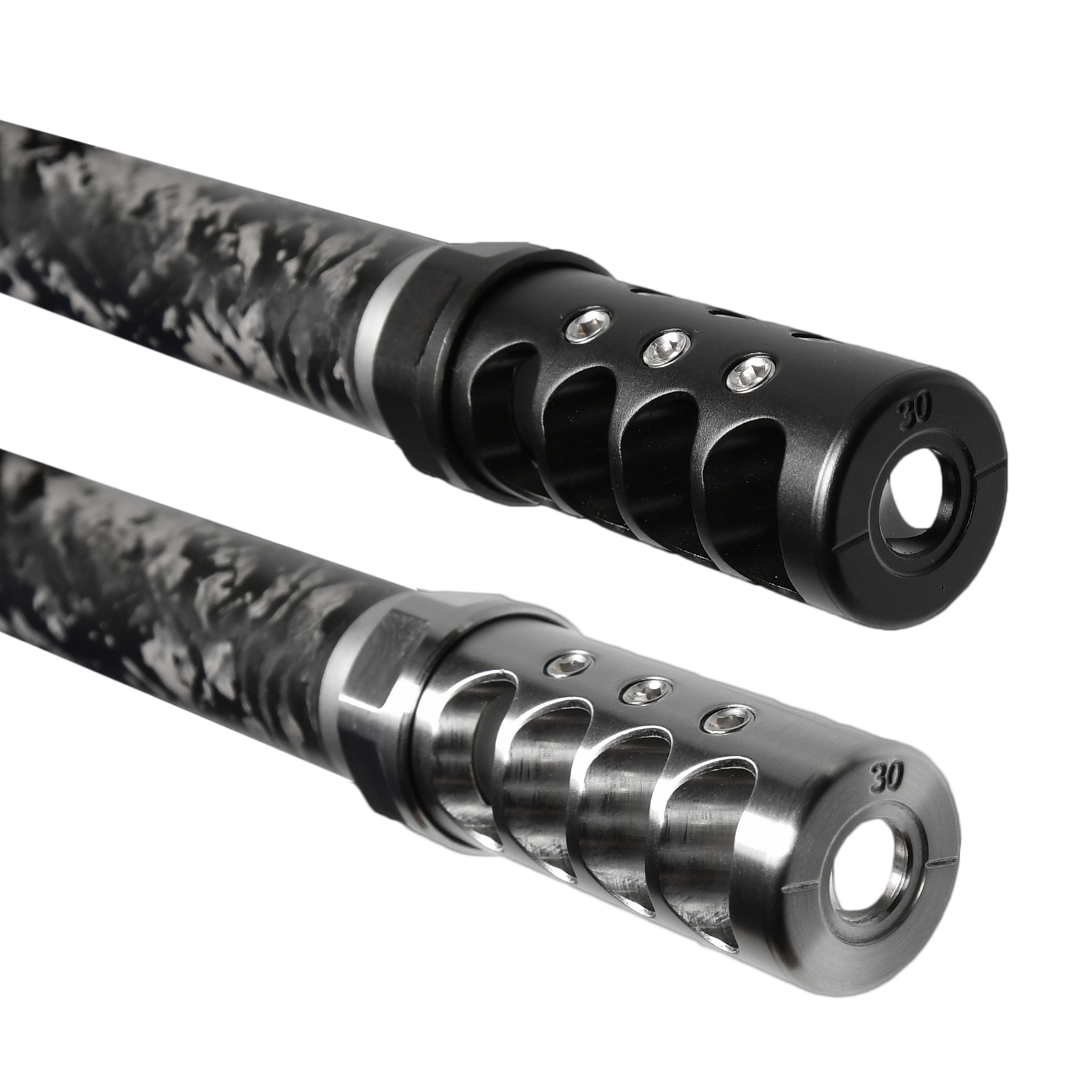

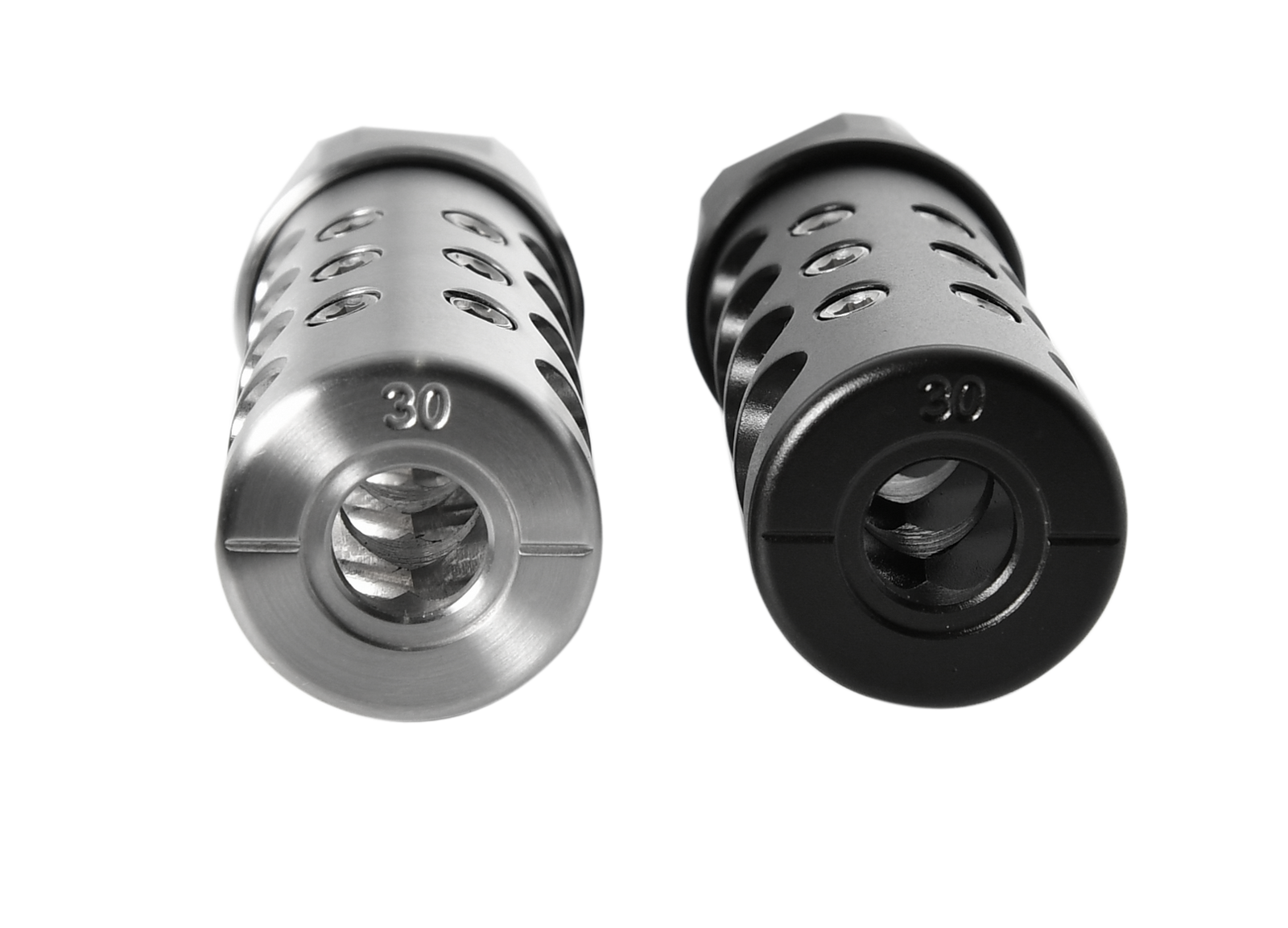
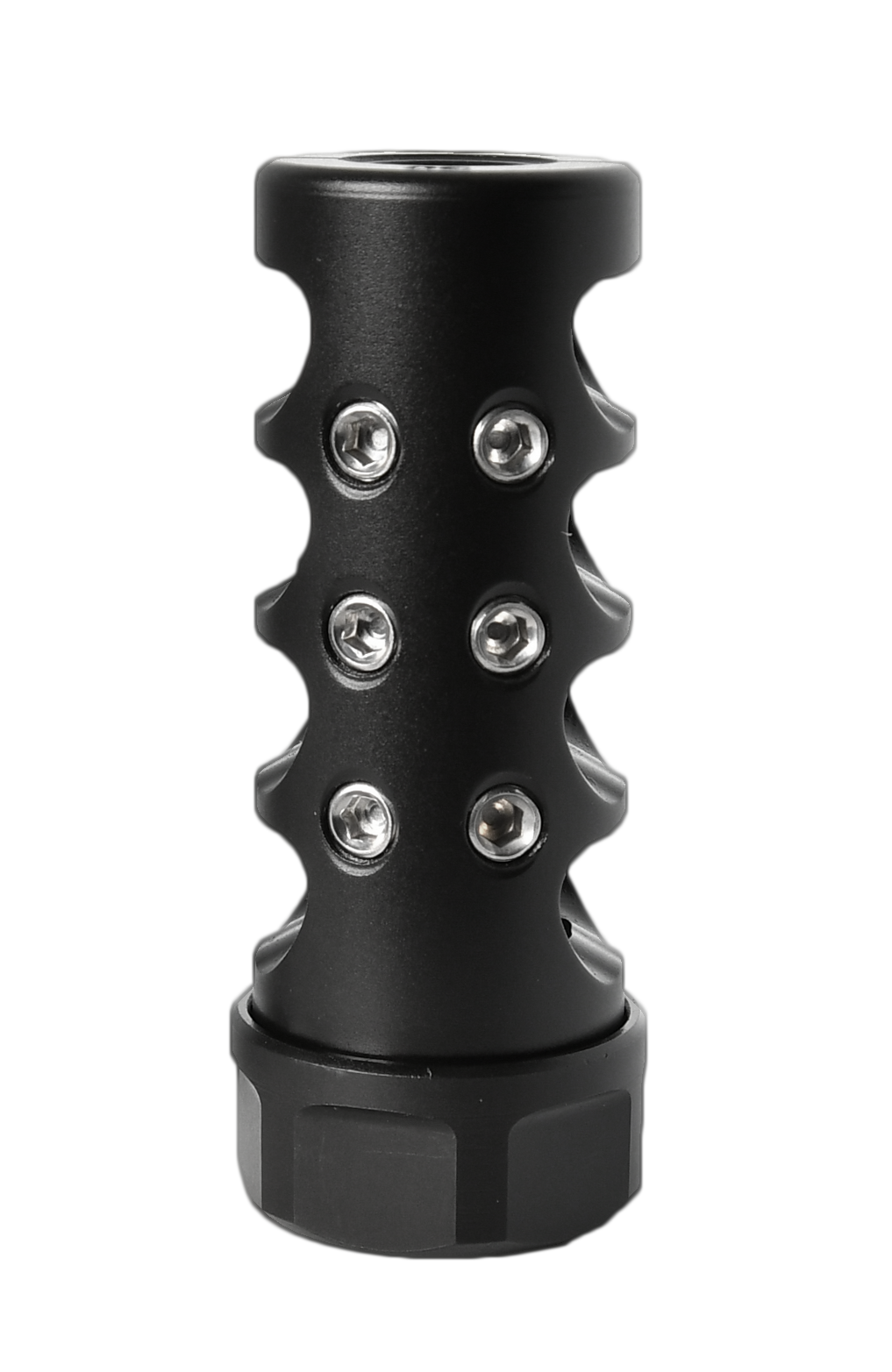
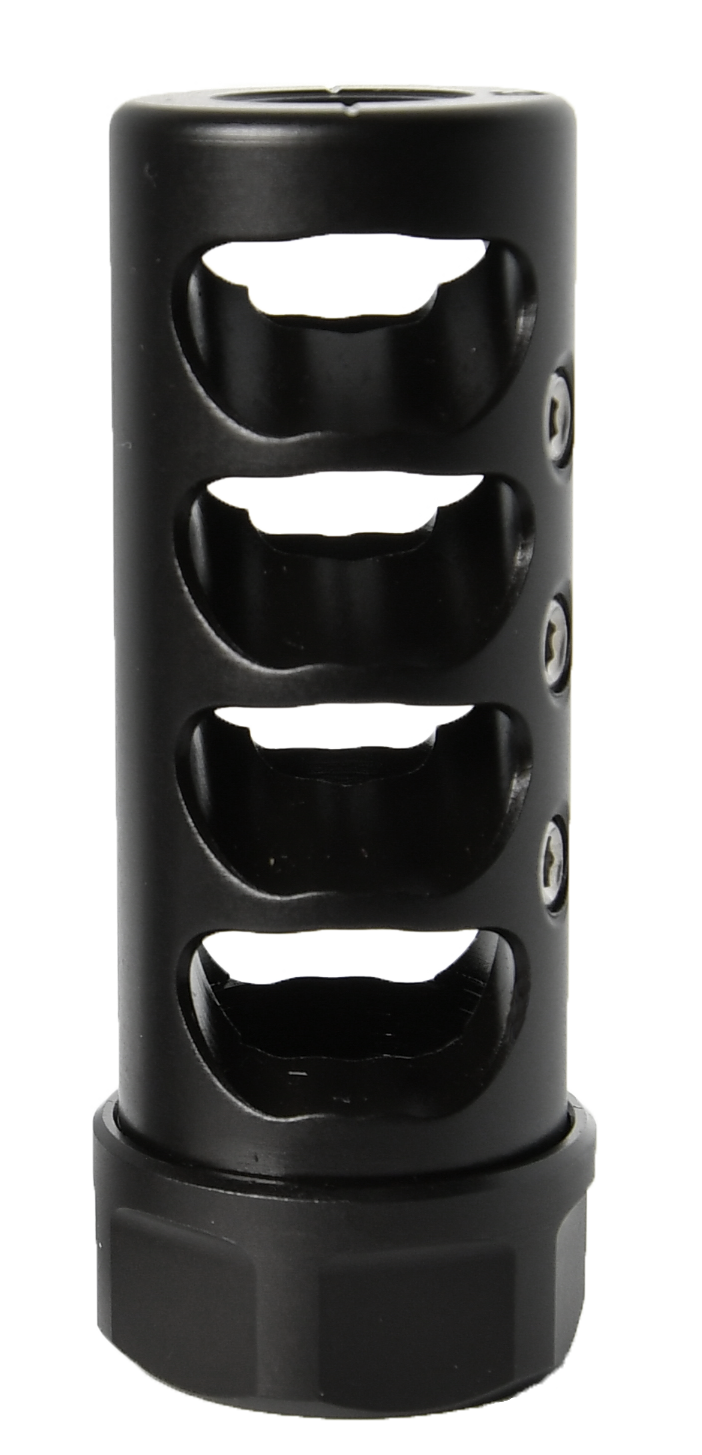
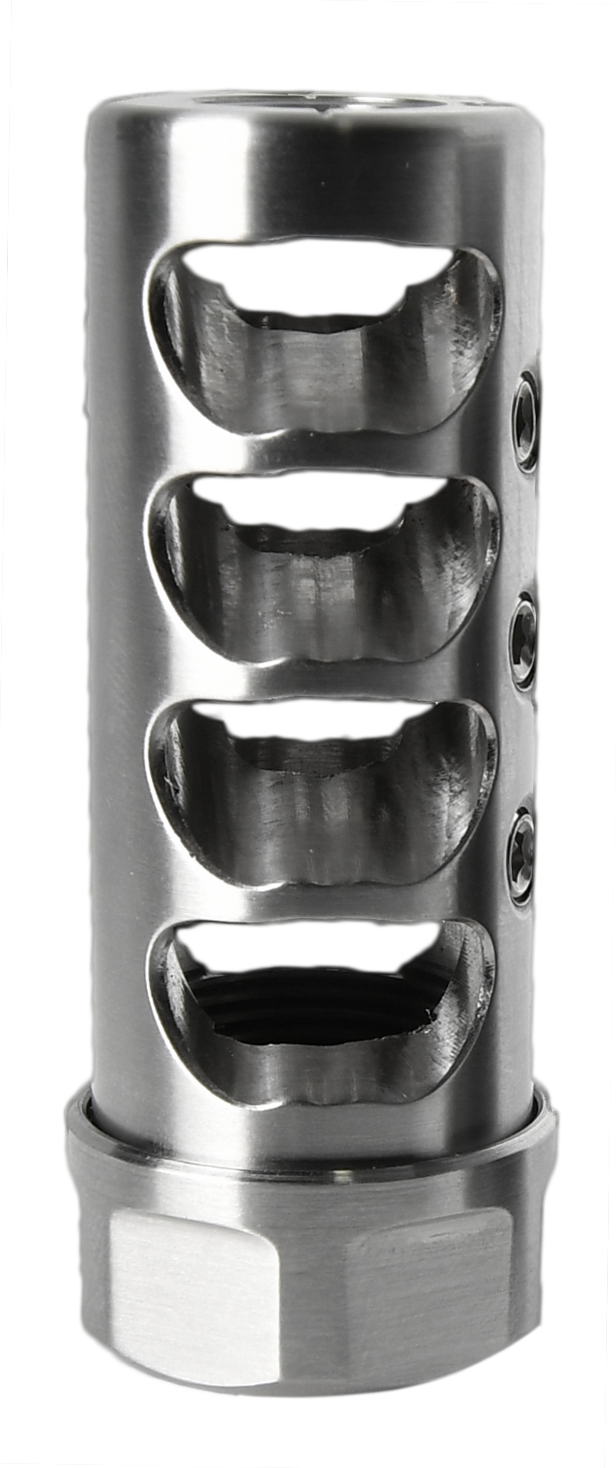
Gen 4 Micro Bastard Self Timing Muzzle Brake
NEW DIAMETER & 5/8X24 THREAD!
APA is proud to introduce the Gen 4 Micro Bastard. The pound for pound king for ultra light weight and recoil reduction! The Gen 4 is a culmination of engineering improvements as well as a little bit of what you asked, we listened. As the long-range precision rifle community grows, the shooter has gotten more refined and discriminating. This has presented us here at APA with new challenges to improve.
Our goal for the last year in developing the 4th generation was two-fold; one to make the flattest shooting brake on the market and two, to create a lower concussion maximum recoil reduction product. We are happy to announce that we did it!
The new calibrated U.R.P tunable top ports have been designed for maximum adjustment making the Gen 4 line of brakes the flattest shooting brakes available hands down. By testing port size, location, and how the gas feeds into them, we have been able to make these tunable top ports capable of generating zero vertical movement.
The new fine-tuned Bastard port has been engineered to decrease concussion while retaining maximum recoil reduction. In the muzzle brake community, there is an unwritten law that says “more concussion, more recoil reduction” and vice versa. This is something we really dug into, and we have found this to simply be not true. Borrowing from decades of research in the golf industry with their “sound is feel” philosophy, we wanted to figure out why a technically more effective and superior muzzle brakes would often anecdotally “feel” harsher even though the gun moved less and moved slower. Well, we had a eureka moment with how the sound or tone works in conjunction with the physical recoil. The new fine-tuned Bastard port and internal manifold produce a softer and sonically smoother recoil impulse by shaping the sound, into a lower frequency. The perception to the shooter is a much softer shooting rifle. This brake is easier on the ears and easier to stay in target, period.
Although the DNA remains the same, the new Generation 4 Micro Bastard Self-Timing Muzzle Brake is a completely new beast. It is flatter shooting, softer recoiling, more tunable, and easier to use than ever.
.850" in Diameter, 2.4" In Length, and Weighs 2.3 oz
Made for barrel diameters of .600 to .850" inch.
The Gen 4 Micro Bastard can handle magnum cartridges.
Available in 308 (7mm) with more calibers to come.
- NEW DIAMETER & NEW 5/8X24 THREAD.
- New optimally tuned top ports for maximum efficacy and tunability.
- New port design and internal manifold that is more efficient, and softer sounding.
- Caliber and level line machined on brake face.
- No Thread-tite necessary in top ports.
- Completely machined in our facility in Jefferson GA
Click Here for Gen 4 Muzzle Brake Installation and Tuning Instructions
Click Here for Extra Gen 4 Screws
Click Here to Add a Thread Protector to Your Order
-
Choose the 6.5mm variant for any cartridge with a .264" diameter bullet or smaller such as 6.5mm PRC, 6.5mm Creedmoor, 260 Remington, 6mm Creedmoor or 243 Winchester.
-
Choose the 30 or 308 variant for any cartridge with a .308" diameter bullet or smaller such as 270 Winchester, 7mm Remington Mag, 28 Nosler, 7.62x51mm, as well as the 300PRC, 300 Winchester Magnum, 30-06 Springfield, and 308 Winchester
Maintenance
Routine maintenance of a muzzle brake is essential to ensure proper function and accuracy. Similar to a rifle barrel, a muzzle brake accumulates carbon deposits during use. Over time, these deposits build up in the ports—most significantly in the final port, as the first two are partially self-cleaning due to muzzle blast. Excessive carbon buildup can eventually obstruct the projectile path, resulting in bullet strikes. While this may appear as occasional flyers during general use, it can be detrimental in competitive applications where consistent point of impact is critical. In addition to bullet strikes, carbon accumulation may alter airflow through the ports, leading to shifts in accuracy or point of impact.
Caution: Do not use Lemishine, CLR, or any citric-acid-based cleaner on muzzle brakes. These agents will discolor the black nitride finish and void the product’s lifetime warranty.
Preventative Maintenance
The most effective method is preventative cleaning performed at the same interval as barrel maintenance (approximately every 200–400 rounds, with shorter intervals recommended for 6mm cartridges). Regular cleaning prevents significant fouling and reduces removal effort.
-
Soaking: Place the brake in a carbon cleaner such as BoreTech C4. On black nitride brakes, deposits typically release with minimal effort.
-
Brushing: If necessary, use a non-abrasive cleaning brush to assist with carbon removal. The black nitride finish is harder than common brush materials and will not scratch; however, raw stainless finishes are more susceptible to scratching and should not be cleaned with stainless steel or other hard-bristle brushes.
Heavy Carbon Removal
If cleaning is delayed beyond ~1,000 rounds, substantial carbon accumulation should be expected in the second and third ports. In these cases:
-
Extended Soak: Submerge the brake in BoreTech C4 for 24–48 hours.
-
Mechanical Assistance: Use a non-damaging pick to remove large carbon deposits.
-
Final Cleaning: Repeat the standard soaking and brushing procedure to remove remaining fouling.
-







